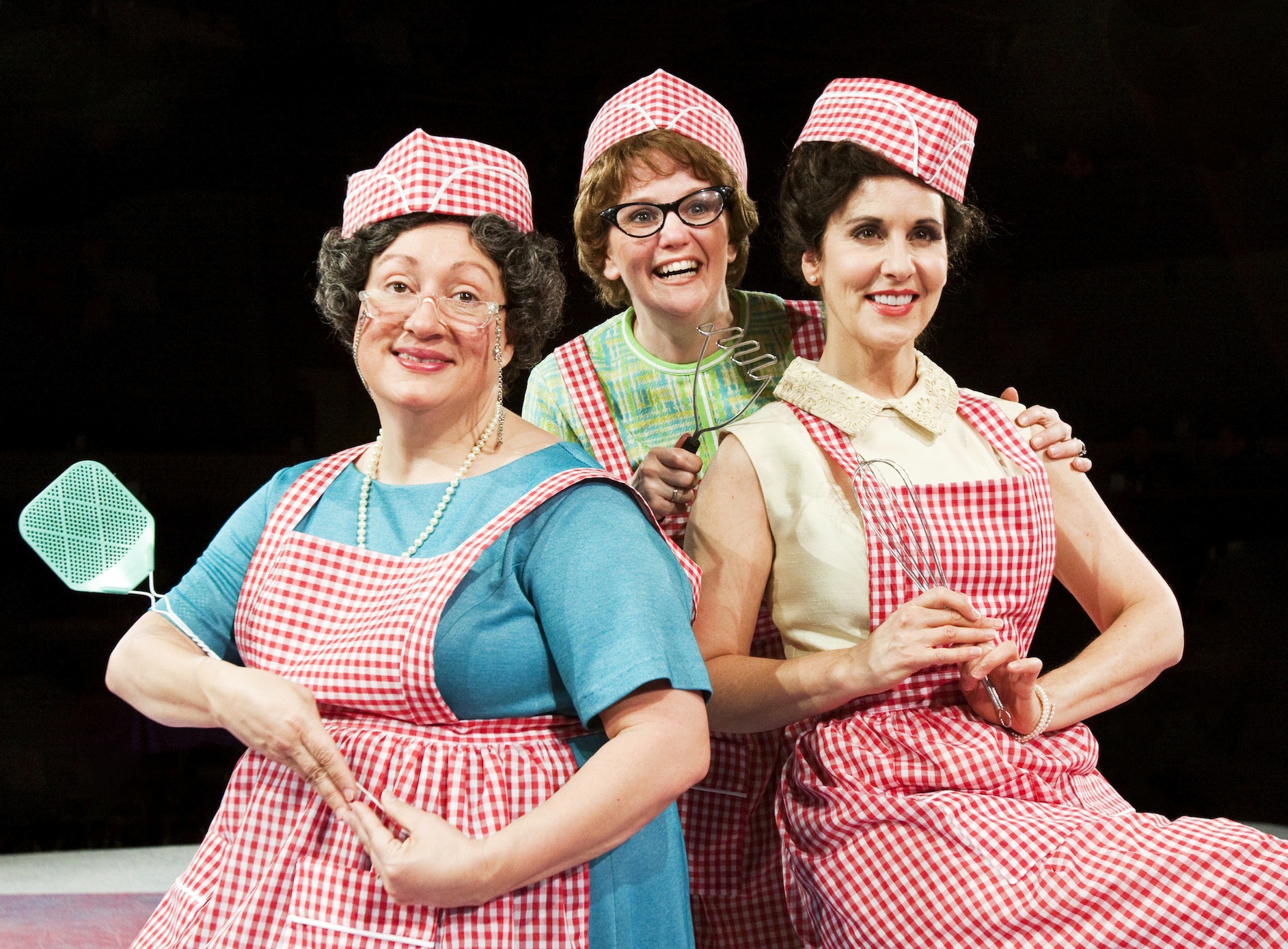By Kathi E. B. Ellis.
Entire contents are copyright © 2013 Kathi E. B. Ellis. All rights reserved.
During this season there has been much ado about one Shakespeare play here in Louisville. The flurry started with Kentucky Shakespeare Festival’s wild-west take on Much Ado About Nothing, continued with Looking for Lilith’s post World War I all-female interpretation, and moved on to UofL’s contemporary take on the script. And now, the recently formed troupe of community actors at the American Printing House for the Blind has jumped in with a Braille Reader’s Theatre version.
The morning of their opening performance, I had the opportunity to chat with two of the performers – Barbara Henning (Hero) and Pam Cox (Beatrice) – as well as director Katie Carpenter, who is on staff with the APH Museum. APH Museum director Mike Hudson also chimed in to talk about the beginnings of the troupe. The American Printing House (www.aph.org) is a unique and, perhaps, under-recognized organization in Louisville. With a federal mandate to provide educational materials for people who meet the legal definition of blindness, the nonprofit provides many services and a museum that educates the sighted about the world of those who are blind. But the museum has permanent exhibits, rather than rotating exhibits, so they’re always looking for programming to generate attendance. In fact, “Pprograms are our changing exhibits,” says Mike. “They help drive marketing.” Each month the staff meets to brainstorm, and it was out of one of those meetings that the idea of a Braille Reader’s Theatre was born. Their first performance was of The Miracle Worker and it is now an annual event.
“Miracle Worker is iconic. All the blind know it,” states director Katie Carpenter. So that took care of the first year. What would they do next? Both Katie and reader Barb Henning agreed that the plays they read with blind characters had problems: too many clichés about “being blind.” So they decided that future plays did not have to be about blindness. The Girl Scout sister of a teen volunteer became a crucial element in the decision-making when she declared that Shakespeare was fun! By November of last year, they knew that this spring’s production would be Much Ado About Nothing.
Thanks to technology, accessing the script was relatively easy, using Bookshare, an online accessible service for people with print disabilities. The company uses both digital Braille readers, traditional hard copy, or embossed Braille copies of the script. Barb and Pam had different opinions about which to use. Pam prefers the traditional embossed Braille; Barb uses the digital reader because it’s easier to make edits and add notes. Other troupe members use “sides,” that is, the embossed copy that has only their lines and the cue to their lines. Katie shared a story of a student at the Kentucky School for the Blind (for which they had done an earlier performance) who had followed along with a complete embossed copy of the script and after the performance had asked to keep the copy. The power of Shakespeare in any medium!
The Braille copy of the script was set up in full lines of text – Much Ado is essentially a prose play, with only a few scenes in blank verse – with indicators to help delineate when the text flowed into blank verse. Line endings are marked with a slash (/), and new lines feature a capitalized first letter (regardless of where it is in the line of Braille text). Because this is a reader’s theatre production, some stage directions will be included to help set location and when characters exit and enter.
Barb has performance experience, being a violinist and cantor with area churches, but says this is the first time she’s tackled Shakespeare since high school. She adds, “This is a different environment. It’s not a classroom…I’m happy to do it.” And listening to her talk about Hero – and the journey to figure out the apparent inconsistencies in her character, to discover her wit and deep feelings – one hears the discoveries of all actors blind and sighted, deaf and hearing. Pam, who is relatively new to Louisville, brings a literature degree to the process, speaks equally passionately about Beatrice’s witty and strong attributes, and confesses to a partiality to the late Fred Major’s reading of Much Ado About Nothing she checked out of the APH holdings.
The APH troupe includes adults and students, some with performance experience and some new to theatre. They’re already thinking about the future. Among their number is a novelist, and they’re talking about adapting one of his stories into a stage play. And are they open to fully staged productions? Yes. There are other troupes with actors who are blind around the county, and they’re interested in how these groups approach issues of staging. At the moment the Braille Reader’s Theatre is an annual occurrence, so it’s worth making a note to check out the APH’s calendar this time next year for the 2014 installment.
As the APH website states, this Louisville institution predates many other Louisville institutions, and maybe this kernel of Braille Reader’s Theatre is the next step in a first for Louisville.




